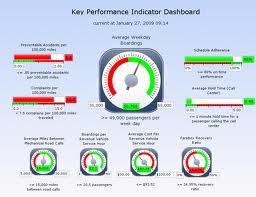Ready for 2012? – part 9
This is the 9th in a series of blog posts under the main headline “Ready for 2012?”
It is addressing the #1 headache of any growing Independent Software Vendor: How to predict, budget and meet revenue targets.
The objective of the blog posts is to outline a 2012 “preparation process” where you end up having a plan and a budget which is a stepping stone to a position as a the global market leader in the future and where the stakeholders are 100% aligned and committed to execute the plan and deliver the numbers for 2012.
The first post was about alignment and identification. The need for having all stakeholders behind the plan.
The second post introduced the concept of organizational health and the need to get important stakeholder involved in the process.
The third post explained how you could actually perform an alignment & identification check.
The fourth post was about the revenue challenge. How do you predict and manage 50-100% growth rates.
The fifth post was about the fundamentals. The business frameworks which must be in place before you can create major (predictable) growth.
The sixt post was about “The curse of reality and the 7 steps to “predictable” results”. How to build on facts, distinguish between reality and prejudices and learn from your experiences.
The seventh post was carrying the title: ”2012 – a step on the way to where?” The post explained the need for a 3-5 year perspective making 2012 a logical and necessary step on the path to the near.
This eighth post was about the actual budgeting and planning process.
This post #9 is about “Your budget, your plan and the KPI’s”
We have already mentioned the concept of KPI’s in part 1 and part 4 of this “Ready for 2012?” series of posts.
If you are running a fast growing business and your ambition is to become the global market leader in your market segment you need KPI’s. Having a budget and a plan is not enough.
Your budget is not your plan. The budget is all the results, which you expect to achieve as an outcome of your activities = executing your plan. How big is the delay between you activities and the numbers in your budget? In most software businesses they are quite substantial.
Let’s pick a few examples.
R&D
You have a roadmap for your product development. According to the roadmap you must release 3 additional modules in Q2-2012, release integration to two third party systems in Q3-2012 and release a new version of your software in Q4-2012 with improved performance, several new features, an improved API and facilities for managing local market and language requirements. According to the company strategy you will start penetrating the German market in 2012 and need a German version of your Q4-2012 release. You must also release services packs as required depending on the bugs reported and patches on a case-by-case basis.
You have a plan in place for delivering. The plan calls for training your current staff in various new tools, adding 5 new developers in Q4-2011, 5 in Q1-2012 and 5 in Q2-2012. You must engage a translation agency and someone to assist with making the software platform capable of supporting local market versions. You also have plans for adding people in 2H-2012 but they have no impact on the 2012 roadmap. You currently have 3 open positions, which should have been filled in Q3 2011.
I assume you have laid out the critical path for delivering on your plan and commitments. However, reality already differs from your plan. Some of you key people resign, you cannot hire the people you have planned (lack of qualified candidates) and those you eventually hire don’t have the skills you expected. The software to manage you local versions doesn’t behave quite as you thought.
What can you do to compensate and still deliver according to your roadmap? When do you know that your only option is to adjust the roadmap?
We must assume that there is a relationship between the roadmap and the revenue potential of your company (this statement will come as a surprise to many software companies!). The sales people must do whatever they can to keep up sales compensating for the delays, but it is hard to compensate 100% and you cannot compensate forever. Expecting the sales department to keep up 100% may be unrealistic and even demotivating for morale.
Delays in product roadmaps are critical to any company, but the earlier you know the better chances management has for dealing with the challenges.
Sales
 Your current average sales cycle is 9 months, the average order size is € 200.000 and your hit rate is 25% of qualified prospects. Average number of debtor days is 45. In your 2012 budget/plan you have initiated activities, which should reduce the sales cycle to 8 months in Q1, 7 months in Q2-3, and 6 months is Q4. You have also initiated activities, which will improve prospecting ensuring that you always have a pipeline value of 5 times that of your order entry budget. You have taken steps to reduce debtor days to 30. You have only included 50% of the improvements in your order entry, revenue and cash flow budget.
Your current average sales cycle is 9 months, the average order size is € 200.000 and your hit rate is 25% of qualified prospects. Average number of debtor days is 45. In your 2012 budget/plan you have initiated activities, which should reduce the sales cycle to 8 months in Q1, 7 months in Q2-3, and 6 months is Q4. You have also initiated activities, which will improve prospecting ensuring that you always have a pipeline value of 5 times that of your order entry budget. You have taken steps to reduce debtor days to 30. You have only included 50% of the improvements in your order entry, revenue and cash flow budget.
Your current customer satisfaction level is 85%, which you consider too low. Your churn rate is 10%. You have started initiatives to improve customer satisfaction to 90% and expect this will reduce the churn rate to 5% through 2012. You have also initiated up- and cross sales initiatives, which should increase order entry from the installed base with 15% in 2012 compared to 2011.
How soon will you know if you are on or off track?
Organizational health
Your most recent internal employee satisfaction survey showed low levels of satisfaction in the areas Autonomy, Management Style, Engagement and Life Balance. The YTD attrition rate is >8%.
You have included activities in your 2012 budget/plan to improve on the problem areas and expect to reduce attrition to <5%. However you also know that you must replace some of the low performers who may not be able to adapt to some of the new business approaches you will introduce.
KPI’s
Without Key Performance Indicators you will either:
- Miss the opportunity accelerating when initiates works out better than expected
- React too late when initiates works slower/less than expected
We shouldn’t start any initiatives without having a cause-effect relationship “theory” and an expected outcome. We shouldn’t wait until the money has been spent or the revenue missed before we react.
KPI’s are helping us staying on top of the initiatives we have started.
Reality and plans never match; corrective actions are always required.
Having the KPI’s in place we must implement a system which can present the KPI’s on a regular basis, in an intuitive way and on demand. There are numerous platforms available for making the presentation, but the data must be provided from your operational systems.
Too much too fast
Reading through the examples above you may have gotten a little breathless. So many initiatives!
You don’t have forever. The market is changing, the technology is changing, and the vibes are changing. That being said there is a limit to how much you should change simultaneously. You can certainly start too much and when you do so the risk is high.
Rule of thump is: Prioritize. Only start what you can manage. Fill up as you release capacity. But keep a high pace and maintain the sense of urgency. Go, go, go.
Next post in the “Ready for 2012?” series: Setting the team – First who, then what










